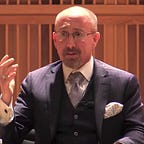Independent Filmmaking in the Time of COVID
Film shoots are slowly returning after months of being shut down due to the coronavirus crisis. With the return of film shoots comes new budget line items to deal with COVID-19. These costs include additional personnel, new equipment, medical testing, and lots of sanitization. In addition to the added direct costs, there are indirect increases in costs due to slower work and increased shooting time. The additional costs of regulatory compliance can be incredibly difficult for independent film productions.
“The budgets will definitely be going up for productions. We are estimating about a 10% increase in our productions,” said Richard Switzer, producer and co-founder of Dawns Light Movies. “Most of the preventative costs can be estimated and worked around. It’s the loss of time due to an infection that would be the higher cost, so we are doing everything we can to make sure that doesn’t happen.”
The added costs associated with COVID-19 will be challenging for large studio productions, which have been looking to offset these increases by saving money by cutting costs like international travel and red-carpet premieres. Independent filmmakers do not have these extravagant costs to cut and have always been forced to look at minimizing costs, often sacrificing in one area to afford in others. The added expenses of COVID prevention and the production risks associated with it have kept many independent filmmakers on the sidelines waiting to see what happens, but some have started productions back up.
“COVID is here, and there’s no sign of it leaving anytime soon. We knew we had to have all of the safety procedures in place before production started so people would feel comfortable with this new normal,” said Kris Black, who just finished co-producing two back-to-back films coming out of the COVID lockdown. When asked what the most significant changes were, Black said, “We did as much prep work as we could to help limit crew size, have tested in place, and have the proper PPE supplies. It felt a little like everyone was working in a bubble, but it’s what had to be done to keep everyone healthy, so we’re happy to take those steps.”
There are countless plans for filming in a COVID world that has been presented by the guilds, studios, and governmental agencies. They vary slightly, but all have some things in common, including:
- Additional crew with the sole job of COVID prevention and sanitization. For large studio productions, this may be a completely new department, whereas an independent film may have a single person tasked with this
- Segregated “bubbles” of personnel. By limiting the interactions of different groups of the crew, the potential for spread is limited. This can take on multiple forms, but most commonly, the production office is separated, and the set is limited to only the most critical people.
- All sets are closed sets. The days of people stopping by the set to watch filming are gone and will not be back for the foreseeable future.
- Testing! Regular testing of all cast and crew has become a requirement for production to catch any positive cases early. Testing represents one of the highest add-on costs to a production budget that did not exist before. In some cases, tests can cost as much as $125 per person, with multiple tests being required per week of filming.
The specific plan that a project will implement will depend on many factors and is likely to change as new guidance and regulations are put into place. Filmmakers should check with their local film office to ensure that the project is complying with all local ordinances related to filming.
As COVID continues to be a prevalent factor in the United States and the world, the future of filmmaking is far from certain. The safety protocols that are currently in place are all new and will be tested if and when positive cases arise on set. The best thing that a filmmaker can do is to set up adequate preventative measures to hopefully keep any active cases from the set but to prepare for it by properly budgeting and planning for worst-case scenarios.
